|
Me, Izzy, and Julia at Mount Rainer. It was a challenging hike, but the viewpoint was so worth it! The mountains were surreal, and you could see strips of bare rock from the collapse of previous evergreens. Me and the interns usually start our mornings in the Garden harvesting. It has been so cool to be able to see all the changes in the garden. These are most of the main vegetables we harvest every morning! I really enjoy digging for potatoes, it feels like I’m digging for gold. I’m amazed by how many beans the rows are able to make. Almost every day we collect a huge bowl full of them! I find myself becoming more present when I harvest. I can’t help but be amazed by its calming beauty, and fresh herbal scents. The Garden truly feels like a magical place. On this day we made blackberry mint mojitos for the movie Spirited Away! We took this picture under the tree house in the Garden. The blackberries gave the mojito a fresh fruity flavor and the mint was a cool addition. Me and the interns like to climb trees. This tree we found in the native food forest. We were amazed at how strong and bendy it was! On Wednesdays we wear pink!
6 Comments
On this day me and the interns learned how to make kombucha from West and Brian. To make kombucha you need sugar, black tea, and a SCOBY to start the fermentation process. SCOBY is a thick, slimy cellulose disk, that houses the bacteria and yeast. The SCOBY feeds on three things tea, sugar, and water. It is sometimes called the ‘mother’ because it can continuously replicate itself and create ‘babies. These babies become the layers that grow on top of the SCOBY and can be used to brew a new batch of kombucha. The yeast’ living on the SCOBY are needed to break down the sugars in the tea. The yeast’s waste becomes food for the bacteria, and in return the bacteria remove toxins from the chemical breakdown of the sugars, this helps the yeast survive. The broken-down sugars are converted into alcohol, carbon dioxide, and acids. This process gives the kombucha its fizzy, vinegar flavor.
Preventing the growth of mold is essential for healthy kombucha making. A low pH is typically unfavorable for mold (lower than 3.5). Storing your kombucha at temperatures between 60-85 degrees Fahrenheit is optimal. Flies or other microorganisms from the air can contaminate your kombucha batch, so covering it is important. Kombucha can be brewed for 7-30 days. A longer brewing time results in less sugar and a vinegary flavor. Some of the health benefits of Kombucha are it’s a good source of probiotics from the bacteria and yeast. Probiotics help with gut balance and digestion. Kombucha made from black or green tea can also have a strong antibacterial effect. Specifically, against infectious bacteria and Candida yeast. Overall, I was amazed by the complexity of the unique symbiotic relationship needed to brew kombucha. I am very excited to see how our batch turns out! During the garden tour I looked down to see to a small bee had landed on my jacket. I couldn’t help but be mesmerized by this tiny creature, as it used its appendages to gently wipe off the pollen encasing its furry body. The garden tour continued, and I carefully walked to the next row Anita was showing me and the other interns. I was cautious not to make abrupt movements with my arm. To my surprise the small animal did not fly away, but instead seemed to burrow in the crease of my jacket, almost as if it were content. I remember being in awe of its glossy see-through wings, and vibrant yellow and brown fur. The calm nature of this animal made me question the violent depiction society seems to paint of its species. I tried enticing the bee to crawl on a nearby Dahlia, but it had no interest in the flower. Its behavior being similar to reluctance from my observation. The small creature stayed with me a few moments longer, and I found my attention shifting back to the tour. I remember glancing down at my sleeve to find the bee was no longer there. The only trace of it was the small pollen trail left behind. The small interaction between this animal and I gave me more insight on the sentience that exists within everything living.
In the months leading up to this internship I never really pictured what my time here at Songaia would look like. I don’t know if I had any expectations either, I just knew that I would be doing some gardening and learning about permaculture. I also knew that because this is the first thing I am doing out of college I wanted to use this internship as a period to work on myself and prepare for the “real world.” Reflecting on these past four weeks my time here at Songaia has already been more than I could have imagined. Not only have I learned so much about how to grow food and how to do it in a resilient manor, but I have felt a sort of peace since being here that has slowed me to become more confident in myself. However, trying to portray these experiences and feelings has been significantly harder than I was expecting and I draw a blank every time I try to conceptualize it or write about it.
I think part of why I am having such a hard time portraying my time here is that I do not know the last time I felt this comfortable being myself. Between the relationships I have formed with the other interns and everyone else here, I have felt nothing but acceptance, support, and comfort. It's weird to me. I'm not overthinking every aspect of my life and to be honest I'm not entirely sure what to do with myself or this feeling. I think there might be some weird juju here that is messing with me. Last week in the garden we talked about the dragon spirit that may or may not be lurking within the community and the more time I spend at Songaia the more I think there is something there. I feel like this poem and series of photos are as close as I will get to portraying my time here thus far so please enjoy. ~The dragon spirit~ There is something about this place that I cannot quite describe I don't think it can be described It is more of a feeling A sensation Warmth Calming Everlasting I don’t know the cause of this sensation Nor do I want to know In my head, it's the dragon spirit that watches over and protects the beautiful people in and place that is Songaia Like many an intern before me, I’m up in a tree. I can hear Mary–friend of the fruit trees–down below; I can almost feel her cringing as I step on a branch that creaks beneath my clunky boots. But the cluster of apples is just in reach…I snag it, snipping two of the three grape-sized baby fruits and letting the sturdiest remain. Mary and the branch are equally relieved as I shift my weight elsewhere and continue to unburden the mother tree (with more careful footwork). It’s cathartic to move with instinct as I snip away fruit. Observe, assess, act. No ruminating on the relative strengths and weaknesses of the fledgling apples in each cluster; no pausing for self-doubt. It feels like I’m caretaking myself by proxy––giving the momma tree what I can’t often give myself: permission to let things go and focus on the most “fruitful” possibilities. It feels as good as wiping a tedious meeting off the schedule. I’m positively invigorated. Have I identified the things in my life to let go of? Absolutely not. Or at least, not entirely. Does this practice make me feel like I could? Maybe. A maybe is better than nothing. If my instincts are calibrated here, there’s no reason why they couldn’t be elsewhere in my life. On a different branch, another intern is pruning away as Mary repeats the two guiding principles of fruit-tree care: air and light, light and air. With those two things, trees can thrive. Without them, you’re inviting fungal disease onto the scene. The fact that we can learn lessons from nature is so unbelievably obvious as to be trite. This doesn’t make it any less impactful when you’re struck with one so clear and grounded. In Mary’s teachings I hear echoes of my own mother telling me how shame can’t survive in the sunshine; how airing out your fears gives them less power. Over centuries of selective breeding and human manipulation, fruit trees have become a bit more like us: more removed from our natural resiliency. Left to our own devices, like the poor fruit trees, we tend to overproduce and overgrow until we enshrine ourselves in shadows and stagnation. Sometimes fungus, too, but let’s not linger on that image. We’ve been bred and trained in the way of “more is more” and we’re overburdened by the sickly fruits of our labor. We’re surrounded by the rot of everything we just couldn’t hold, decaying in a pile beneath us, fermenting into next year’s troubles. We’re in need of light and air; of intentional simplicity and thoughtful care. To me, that is what the Songaia internship has meant. Instead of waking up to a swirl of deadlines and projects, I wake up to a view of the forest, a slow cup of tea, and a day full of plant- and people-care. My work is simple and I’m supported in keeping it that way. There are few places for me to hide away, so I’m forced to face the light and air and living in community, even when it means showing my flaws, my fears, and my imperfections. I still tend toward over-complicating and getting lost in guilt and shadow: Am I producing enough? But I’ve seen with my own eyes the difference between the sad, shriveled fruit of a tree trying to do too much and the robust fruit and disease-resistance of those that have been thinned and pruned. This summer has been a hard-prune for me, and it won’t be the last. Orchard-keeping is a practice of care over many seasons and years, and Songaia has been critical in my re-shaping. I feel immense gratitude for the Songaians (human and vegetable) who have invited me into the work of transformation at nature’s pace. Next year, catch me fungus-free, thriving, and fearlessly trusting my instincts. Here’s hoping. These past few weeks the (green) beans have been coming in nonstop. Their vines are so tall they climb all the way up their trellises that tower above our heads and then reach out to the sky seeking to go ever higher but instead with nothing else to grab onto fall down and curl back onto themselves. Spiders have built webs up there amongst the beans that are hidden in the tangled masses of tendrils. Beans hang high and low on the vines. They are pale yellow, green, and deep purple in color. The judión beans that cover the arbor near the entrance of the bean quadrant conceal a little Bean (3 and a half years old) and their caretaker, West, who pick the large sun dried brown pods of Spanish butter beans in the shade. The flowers on the outside of these plants are a striking white and bright red-orange against the deep green leaves of the bean stems and leaves that are so tightly woven you cannot see inside. The judiones provide a temporary shelter that will come down in the Fall, when we will once again be able to see across the garden. The judión beans growing on the plants with the white flowers are white, and the ones growing on the plants with red flowers are purple with white spots. Helen received the judión seeds from a friend and thought they would all be white. The purple beans are a mystery. Helen says Bean shelled all the dry beans last year. Bean was watching a video one day not too long ago in August of themself shelling beans in the greenhouse the year before at 2 years old. You can hear the Fall rain hitting the greenhouse roof in the video. Bean smiled as they watched the clip, and said: “when can we do that again?” And now, it is time to do that again. It is so beautiful that everyone can play a part in tending the garden and feeding the community. One of the first things I got to do when I started as an intern here was build a trellis for the beans. At that time, they were just a few inches tall, starting to reach up out of the ground. Byrd and I had thrown a ball of twine back and forth over the tops of the A-framed trellises made out of rebar and bamboo and looped it under the bottom horizontal beams to create a structure for the beans to climb up on. We wound the baby plants’ vines up the twine, trusting their tendrils would find their way up the rest of the trellis. This was back in early July, when you could still see through some of the bean quadrant. Now, picking beans is a coveted job in the garden. Standing amongst these giants one feels so hidden amongst the dense foliage that you cannot help but find serene solitude there. Searching amongst the leaves for the hiding beans feels simultaneously like a game and like a ceremony. Just a few days ago, I picked some beans from the fully grown plants in the early Fall sun and made green bean soup. I used some other ingredients picked fresh from the garden (green onions, garlic, purple potatoes), and from the pantry. This soup is one of my favorites, a soup I first tried in Mexico a decade ago at a restaurant called La Habichuela (“the Green Bean”). West joined me for a bowl. After cooking and blending all of the ingredients, the purples, deep greens, and yellows gave way to a pale green color. Soon Helen will start letting the yellow and purple beans turn brown on the vine to save their seed for next year. Perhaps baby Bean will shell those too. This feeling of being in the midst of change is still present: in myself, in Songaia, and in the world. I’m going to bring in some chemistry again and use an energy diagram to illustrate how I visualize the energy required to achieve a change. For every chemical reaction, energy is needed to move from the initial reactant compounds to the final products. Even if the products are lower in energy—at a more stable, comfortable state—reaching that state requires energy to do things like break chemical bonds. As we move through transition, energy is also required of us. Energy to leave the things that we are used to, to accept newness, to live with uncertainty, to question habits and patterns and to envision and build and embody a new state of being. There may not be a lot of hope right now that the new ways of living that are to come are going to be easier than what we’ve known, but maybe we underestimate how challenging and demanding life has become. It’s during this transition phase that we have the opportunity to discover how much better things can be.
I envision Songaia kind of at the peak of the transition state, between the individualism of the mainstream way of living and the full potential of established community living. This full potential may not be possible in our current economy, maybe not even until we change the broader culture of judgment and blame and competition that is so at odds with our striving towards togetherness. But the fact that this community has thrived so well in the midst of “currently existing capitalism” is to me a great source of hope for what is possible. Some wisdom I picked up from the Rite of Passage Journeys receiving ceremony a couple weeks ago has stuck with me. For the youths who were returning home, the transition to adulthood was happening whether they and their families recognized and embraced it or not. So a main purpose of the program is to bring intention to the transition, without which families often end up on autopilot, subconsciously resisting the changes that they consciously know have to happen. Sometimes I am dismayed at how our inclination to resist change and conserve energy can work against us. I am beginning to appreciate how important mindfulness and intention can be, as if they are a catalyst in a chemical reaction, decreasing the height of the energy barrier during our transitions. But the difficulty of accepting change can still sneak up on us. To transition from one trajectory to another, to allow ourselves to be influenced in our thinking and then to examine and adjust and our actions can be a humbling experience. The energy needed to cross over the transition state and follow through with the change can be surprisingly high… Blackberry season is in full swing, and for the whole two months I’ve been here, Songaia has been blessed with berries. I’ve spent some quality time harvesting raspberries, golden raspberries, native blackberries, salmonberries, currants, white currants, jostaberries, and blueberries. Most of the time I’m pretty good at going for the ripest berries, but sometimes I’ll find a berry that I think is ripe and I’ll try to pick it, only to find that it doesn’t want to come off the bush yet. Depending on how hard I’ve worked to reach this berry and how sure I am that it’s the right color and squishiness, my response may vary. Sometimes I find it surprisingly difficult to accept the information that the berry is giving me: “I’m not ready yet!” Sometimes I want to believe that I know better than the berry, and engage in a tug-of-war. On the occasions that I win, I am usually disappointed by a sour, unripe berry. I’ve had this experience many times. And the practice of transitioning from a sense of certainty about picking a particular berry to accepting that I was wrong and leaving it for another day can still be surprisingly hard, even when I approach most berries with more of a question of ripeness and a willingness to listen to the berry. Maybe it’s a silly example, though, especially when so many of the changes we are facing come with real grief. Our planet is getting hotter and smokier and more uncertain, and even though this doesn’t mean there won’t be unexpected beauty and healing yet to come, we are losing the climate that we’ve known. For a while, actually, I was craving change. But I may have slightly underestimated the challenges associated with the changes I’ve brought into my life. There is very little that is familiar to me now, here, in this new place; and even if what is familiar didn’t serve me well, I’m feeling the need for a deeper level of processing. Not only have my living situation, daytime activities, hobbies, and future career plans all shifted radically in the last several months, but as of only four years ago I changed my gender as well. For those of you with whom I haven’t shared this already, I am a transgender male, and I spent my first 25 years living as female. Between the hormone therapy, overcoming depression, and beginning treatment for ADHD, my life is pretty unrecognizable from the way it’s been for most of the last 15 years. These are probably things that I should be sharing with a therapist and not in a blog post. But suffice it to say, I’ve experienced a thing or two about living in transition. It’s exciting, scary, unexpectedly exhausting, and unexpectedly wonderful. Personally, I am certain that the new life I’m stepping in to will be much more energetically favorable than my old way of living—and much better aligned with my purpose and gifts. And hopefully, with a little recognition of both the hard work we’re faced with and our capacity for resilience, we can mourn and dream and create and move into the next phase of life with the assurance that even though a lot of it may be new, we just might be okay. Songaia has been abuzz with talk of the changes taking place: many community members have been undertaking the exhausting task of moving, and the uncertainty of coming out of the pandemic looms. Yet these shifts have seemed almost invisible to me, not yet acclimated with the long-term rhythm of the community and myself in the midst of quite a few changes as well. But as some things change, others remain the same. At times this can be reassuring, and at other times frustrating. Or it may simply take us by surprise! In coming to Songaia I anticipated--well, maybe not leaving my chemistry training behind entirely--but at least being buffered by layers of complex biological processes. (In my research I generally work with only a single molecule at a time.) Yet in just my first three weeks I encountered two molecules which have had a profound impact on my gardening experience, and which I have felt drawn to learn more about. (Is this out of habit? Has my curiosity blossomed outside of the academic environment? Passions, gifts, quests for knowledge; my understanding of all these things is in flux for me as I take time in this new experience to find my path forward.) As for the first of these chemical goings-on in the garden, you likely received an email from Helen to let the community know that the horse manure we've been using seems to be contaminated with an herbicide. Specifically, the herbicide is a synthetic growth hormone, which is one of the main classes of herbicides and has been used since World War II. Their popularity is due to the fact that the plant growth hormone auxin only exists in broadleaf plants, so these herbicides can be sprayed on grasses, corn, and grains with no ill effects. Unfortunately, many of these chemicals are very persistent, easily passing unchanged through horses and cows who eat treated hay or grain, and contaminating compost piles through treated grass clippings. Clopyralid in particular has been notorious for its persistence in compost, and we are very grateful to Helen for recognizing this as the likely cause of our damaged tomato plants! The curled and veiny leaves are certainly very strange. In fact, not that much is known about how synthetic growth hormones cause these distortions, or even how they become lethal in large doses. The discovery of the growth hormone auxin dates back to 1926, and synthetic forms were soon used to promote plant growth in numerous ways—even inducing seedless tomatoes. Only tiny quantities were used, as workers found that too much hormone would cause plant distortion and death. By the 1940s, though, the usefulness of this toxicity was becoming apparent, and a synthetic auxin called 2,4-D was soon tested for use as an herbicide. The increased productivity and efficiency from using synthetic auxins as herbicide created a massive market for these chemicals, and now we find ourselves in a time where growing food without them is almost radical. And difficult, given that they stick around in soil at harmful levels for months or years. Thankfully, we have microbes around to help break down herbicides, and we can add our compost tea to enhance this. But when the research funding comes from profit or potential war applications, gardeners are left with contaminated soil and minimal access to resources to find solutions. How do we promote an agricultural revolution where there is no product or profit motive? Regenerative, organic, polyculture gardening is certainly not as efficient as dousing monocultures with synthetic chemicals. What, then, is the importance of efficiency in the garden? Why do we Piglets go out and weed nearly every day? I've been thinking about the path of least resistance, or the principle of least effort. We strive to do things the easy way, to get by with adequate results and conserve energy. Herbicides certainly made weed management easier, but the agricultural systems we have as a result are not adequate. Permaculture, it seems, values resilience over efficiency. I look forward to digging deeper into how our food systems can be sustainable without being as efficient as conventional agriculture. Maybe productivity makes up some of the difference, and maybe we never should have optimized the efficiency of our lives to the point that garden time got cut entirely.
Interestingly, furanocoumarins can also inhibit cytochrome P450 enzymes, which can end up either increasing or decreasing the effectiveness of over 85 drugs, including caffeine. This is why many prescriptions come with a warning to not consume grapefruit while taking them.
Biochemistry is not really my forte though, and it's intriguing but also frustrating how little we know about the biological effects of the chemicals that we rely on. How different will the world be if and when we've mapped out the role of every small molecule and protein in our bodies? What about every microbe in our soils? (Is that even possible?) Will we be more cautious about introducing new synthetic molecules to our systems? All I know is that nature has a lot more experience at creating resilient systems than we do. But humans have a great capacity for resilience as well, especially together. And when we tap into this we know that whether things change or stay the same, we can often find new ways to thrive. Brian recites "Be Cool, Little Seed" at the July Strawberry Social. Be Cool, Little Seed by "Mulch Carruthers" As an intern, half of my days are spent in the Songaia garden, which really is one of the most beautiful places I’ve ever seen. It is a hectic, chaotic garden, a riot of flowers and vegetables, both eaten, growing into one another’s territories and getting all quantum entangled. Most things in it I can’t identify and never will. I think this might be a dahlia, but I’m not for sure. This might be a carrot, but who’s to say? Not me, certainly. There are vivid, royal purples and vaguely pervy pinks where you wouldn’t think they’d be. A sudden shock of needless blue speckled in yellow. The omnipresent, weightless mass of green. The garden is a mixture of practicality and whimsy, not big enough or efficient enough for self-sustaining agriculture, but sprawling enough to be gorgeous and strange, to sit there and be weird, to be obsessed over and loved. Some residents argue that they should only plant utilitarian, high yield foods, the better to survive when whatever inevitable Ragnarok is coming finally gets here, but to most of the Songaians that’s not the point. The philosophy behind the garden is, ‘You have to feed the soul as well as the body.’ I spend my mornings in the garden, weeding, mulching, picking fruit, berries, hauling horseshit, and in the afternoons I’m sent to make things in the barn or tearing down old structures or trying to process the food we picked in the garden that morning. I make dried figs and blackberry pie and blueberry fruit leather and zucchini chips. I’m going full on Little House on the Prairie here, I’m considering wearing a sunbonnet and dying of typhoid. On my first day working in the garden, I meet Helum*, an older woman who pretty much lives for the garden, it’s human avatar, and I come to really respect her depth and breadth of knowledge. She tries to show me how to weed the kale beds, a really important job as the people here go nuts about kale, parsing it like Chateau Lafitte, enumerating it’s qualities. The Curly Kale has overtones of pepper, and do I detect faint hints of cardamom? The Siberian Kale has a delicate, rosy-fingered sweetness to it, don’t you think? I can see pairing this with with a crisp apple salad, and a cider dressing would really make it pop. To me it’s all just kale, just barely this side of food, but I enjoy hearing them dissect the finer points of kale fetishism, although it makes as much sense to me as having a favorite brand of iceberg lettuce. Helum tries to show me how to weed the kale, but it gets real complicated real fast. We kneel in the dirt and she identifies every single green thing. “So we want to weed around these little darlings, but, keep in mind, really nothing is truly a weed, they just lifeforms growing where we don’t necessarily want them to grow. These little ones are called Lambs Ears’, these fuzzy things, and how can you dislike something called a Lamb’s Ear? Let’s just leave her alone. And this fellow right here is Horsetail, which, yes, is technically a weed, but he has a lot of sentimental value for me, so let's just skip him for now. And this is Bindweed which causes terrible problems and is a devil to get rid of, but it’s a living thing and has just as much right to its life as us, so let’s not cut it back too much. It dreams, you know. It has hopes and feelings. This is buttercup, a weed, true, but such a lovely blossom! Would anyone really want to be responsible for ending its life journey?” “Um,” I stammer. “So what should I actually do?” Helum stares up at the sky, directly at, as far as I can tell, the sun. After giving it a think, she says, “I don’t know.” In another life this dithering would have driven me up the wall, so cloying, but when Helum does it I find it infinitesimally charming. I come to really enjoy the gardening process, although I have no patience for it. I lack the Zen that comes with waiting gracefully. I fidget, I spaz out easily, I lose interest in anything that takes more than a few days to complete, I wander off, and gardening takes forever. We grow tomatoes, tend them, weed them, protect them from rats, squeeze them every couple of days just for the tactile joy of it, say encouraging things to them, and then, on their own langorous schedule, watch them turn lipstick shade colors, pick them, wash them, chop them, a quick puree, boil them down, can them in steaming jars, all this toil and wait to make something that’s worth $2.49 in the supermarket, practically free in the global economies of scale. It’s so crazily labor intensive and slow making food in this medieval way, you spend hours working and get a can and a half of peas, or three days to get a couple of jars worth of dehydrated cherries, an eternity for a bland bean salad. By the end you want to howl, ‘Save me, Monsanto! Inject me full of GMOs and gluten and corn syrup!” I learn that it’s no use planting a crop unless you can tend to it, no use tending to it unless you can harvest it on time, no use harvesting it unless you can preserve it or gobble it all down immediately, and there’s little chance of you eating it unless it tastes good. It doesn’t have to taste superlative, but it at least has to be medium good, because if it doesn’t, you’ll pretty soon fall to the temptation of giving up this life of toil, getting out of the sun, scraping the dirt out from under your fingernails, acquiring a straight job, investing in oil and arms manufacturers and ordering the cheese fries. But that’s where I and the Songaians differ. Tastes are just a bit altered here, and things are a big hit if they taste a little like soil and dirt. They eat salads without dressing. They eat nut-free collard pesto with nutri-yeast. They eat cold kale soup, and even if I had to conjure something unappetizing up, as a joke, I could not have fathomed this. At first I wondered if I was just being a sensitive little nelly on this point, wondering if these foods are actually bad or just foreign to my palette. I still haven't made up my mind. Sometimes it seems like there's an element trying to prove something with this food. It’s like saying, ‘Look how much old-timey effort and resources we can put into making something that only a Wiccan pixie would dare to eat.” I wonder, can any revolution succeed by eating Cream of Nettle soup? And if it can, would I want to be want to be on the winning side? But still, the process of gardening is intriguing. “Gardening is all about sex,” Helum tells me. She’s showing me how to cross-pollinate the zucchini. It involves taking the yellow squashblossom flowers, the male and female, and mooshing them together, sexing them up. You squish the stamen or pistil or whatever it is of the happy yellow penile head into the vaginas of the female flowers. It’s erotic from an inhuman, removed, God’s eye point of view. She says, “And then we’re going to take a piece of masking tape and tape the female flowers shut in a little chastity belt.” Afterwards there’s happy, spermy Crayola-yellow pollen on our fingers and we dispose of the used, floral penises, spent and limp. “Squash are very promiscuous,” Helum explains. “If we didn’t tape them shut they might breed with other strains of squash that we don’t want in this bed, it just ensures that these little darlings keep their maidenly virtue. What hussies, what trollops, these squash are, if given their way. They are proud to announce their place in the oneness of things. ‘Look at my genitals,’ they scream with every bright, garish color, every labial fold.” I’m 16% aroused. A week later, a scandal erupts at Songaia as someone has been entering the garden and night and taking all the squashblossoms, especially the male ones for some reason. This means that the females aren’t getting fertilized, leading to little, stunted, erectile dysfunction squash. It’s such a weird crime, and the Songaians are genuinely disturbed by it. “We can’t let this happen, people! Our squash are suffering!” Squashblossoms are edible, so maybe somebody is taking them to garnish their salads. Lists of suspects are drawn up, armchair psychology is used to try to identify the kind of nefarious character who would take all the zucchini wangs in the dead of night, this symbolic castration of the community. They have me make a dozen signs to be planted around the squash bed, saying, “PLEASE DO NOT PICK THE SQUASHBLOSSOMS!!!” in an increasingly desperate and pleading font. They go full tilt Agatha Christie. “So, I saw you going into the West Gate of the garden last night, around 7:38. You know, where the squash beds are. Anything you’d care to share? Hmmmm?” Even I come under suspicion, which shows how little they know of me. I’m the last person here who’s going to willingly stuff flowers into my mouth and gobble them, except if I thought it was funny, which of course I do. I even begin to suspect myself. Maybe I’m doing it somnambulistically. We’re through the looking glass, here. Helum is showing me how to plant a new crop of kale, which is much more my speed than weeding the kale. She demonstrates how to poke a little hole in the soft, wet ground with my finger and drop in a couple of microscopic black dot seeds.She says, “They only need to be covered with a thin layer of soil, just like a blanket for these little babies. Such tiny seeds! So much potential! And when you plant them, you tell them, ‘Hello, little seed. It’s time to wake up. We promise to make this as welcoming a home as we can for you and we thank you for coming generation after generation and sharing your lifecycle with us. You are welcome and accepted here, you are loved and wanted. Please bless us with your presence. And...breathe.” And then she folds her hands and closes her eyes for a moment. “You want me to say that every time I plant one of these?” I look into my cupped hand, there must be five hundred seeds occupying less than half a cubic inch of space, and I am self-centered and small and weak and stupid, and I don’t know if I’m capable of actually saying those words in that order. “Well, that or something like it,” she says. “Whatever comes to mind. Just give them a blessing, welcome them to our garden.” “Okay, then.” And Helum goes away and does whatever, leaving me on my knees in the deep, brown earth. And I try, I swear to God I try, to say the words each time I plant a kale seed because I’m trying to be a good person and not the monster that I secretly suspect I am. I try, but it’s hard, because I am not a sincere person, I just lack that capacity, I was born without that particular eyetooth. But I repeat Helum’s mantra, as well as I can remember it, which is not very well. I close my eyes when I say it, and have to consciously force my eyes not to perform a scoffing, teenagery roll beneath the eyelids, because maybe if I pretend to be a good person for long enough I’ll wake up one day and transubstantiate into an actual good person. By the fifth seed, however, I’ve edited the prayer down to, “Little seed, little seed, just be cool.” And this I am capable of saying with every one of those six hundred seeds, which will eventually grow a crop that I am incapable of aesthetically appreciating, because it’s kale, but I say it anyway, eyes closed like a ding-a-ling. And I’ll end up saying every day at my time in Songaia, maybe thirty times a day, silently, inwardly, when something bothers me, when I just don’t fundamentally understand the good gentlefolk who live here, whenever Cream of Nettle soup touches my tongue, when my personal furies arrive, which is all the time. I say, “Little seed, little seed, just be cool.” I am the little seed in this clumsy metaphor, just to spell it out. It lacks the poetry of Helum’s blessing, but it still kind of works. Let’s all say it together, shall we? Little seed, little seed, just be cool. And...breathe. *Names in this story have been changed. For purely comedic effect. |
AuthorGarden bloggers are community members, volunteers and interns at Songaia. Archives
August 2023
Categories |

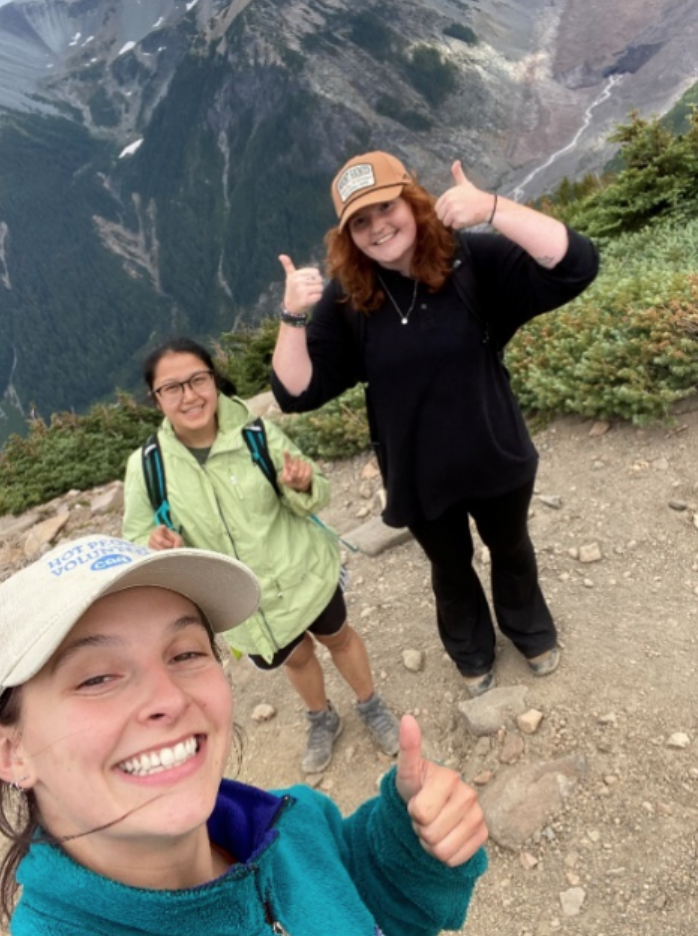
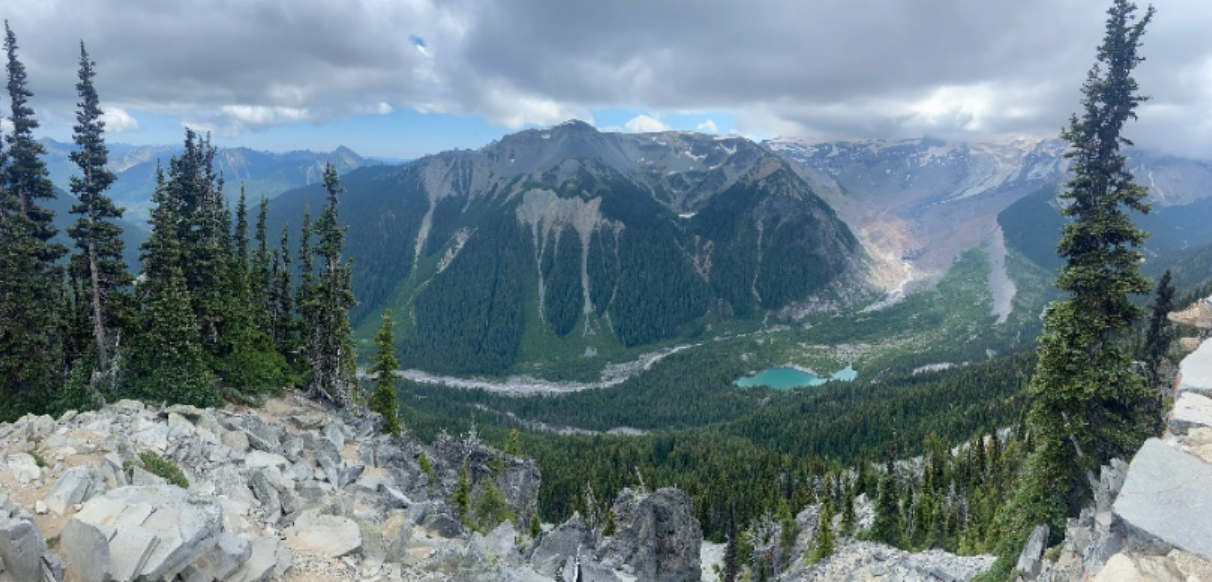

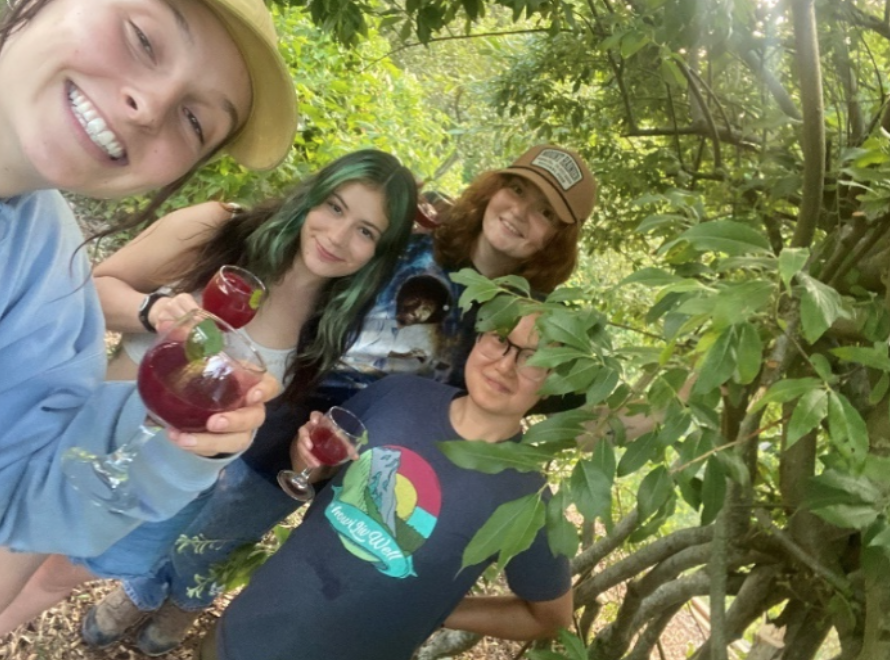
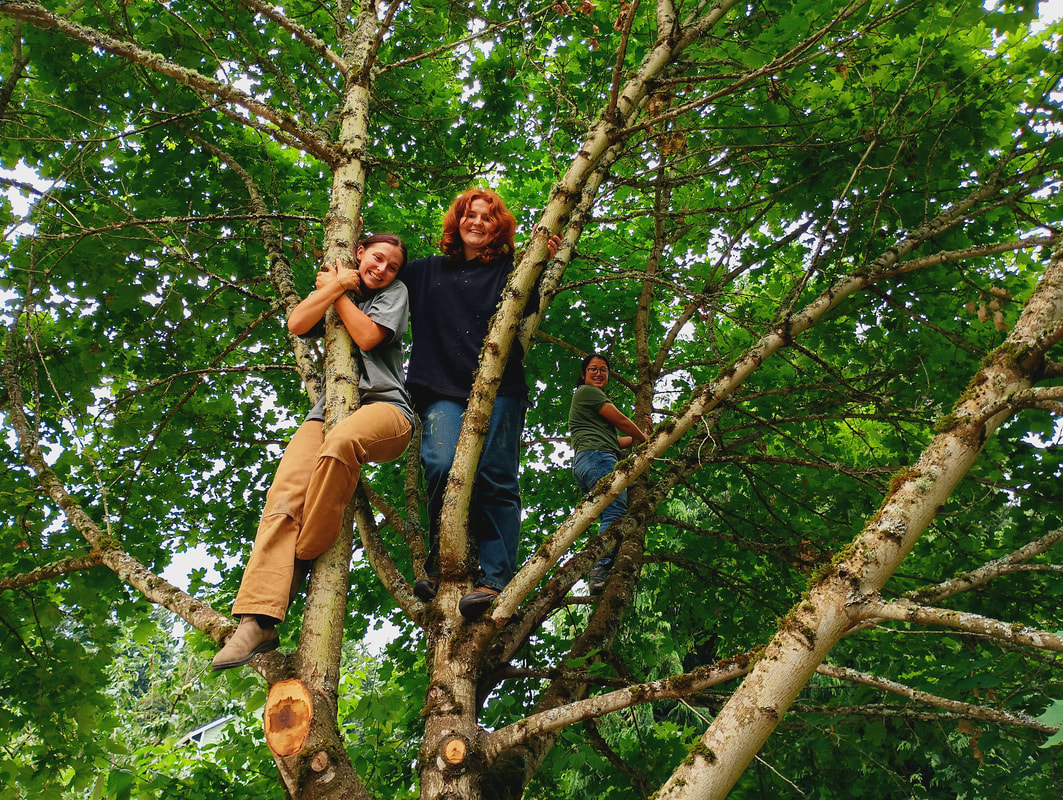
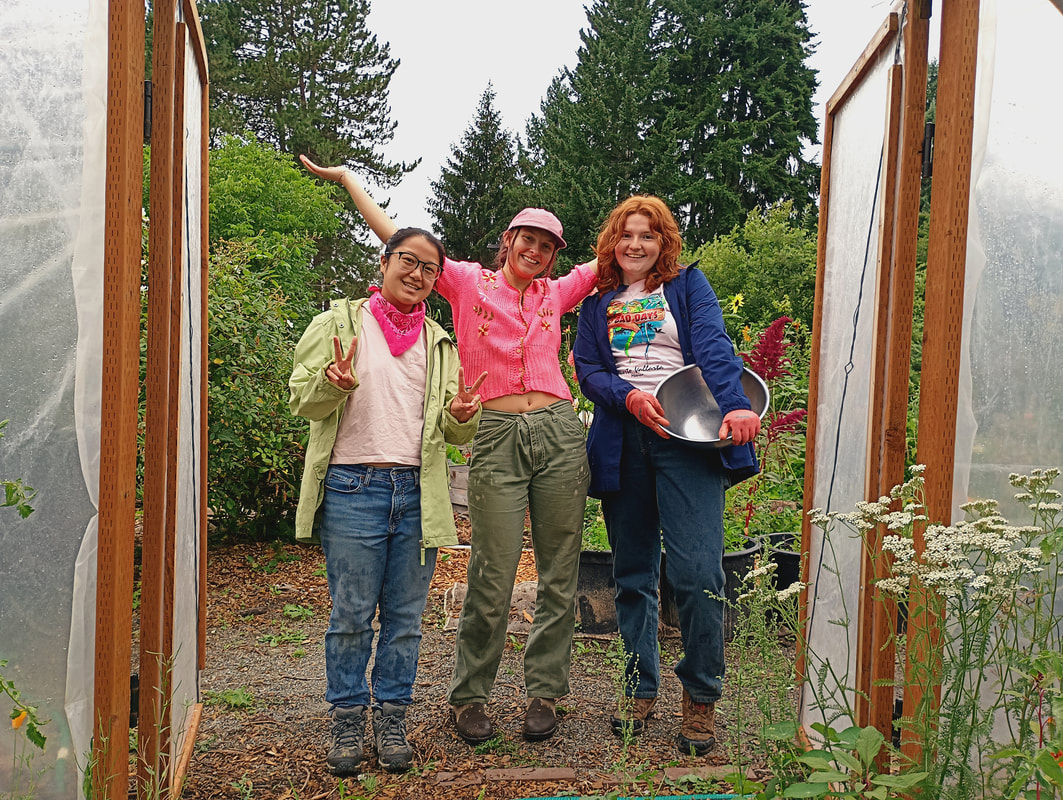
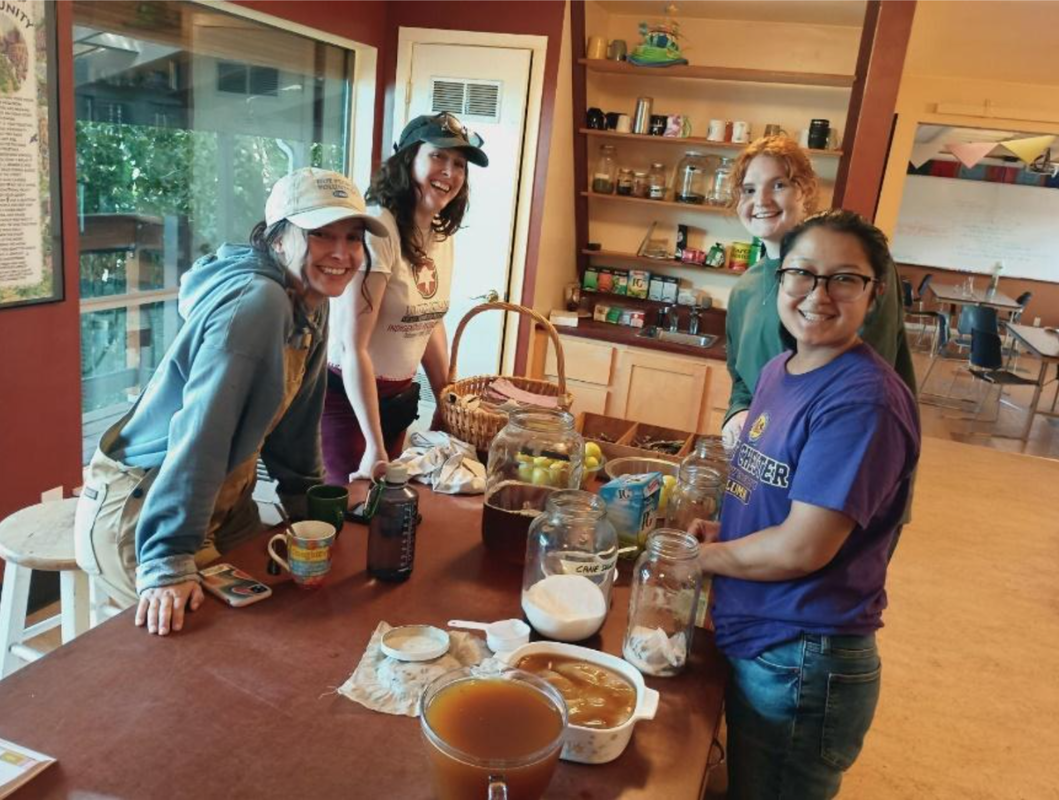
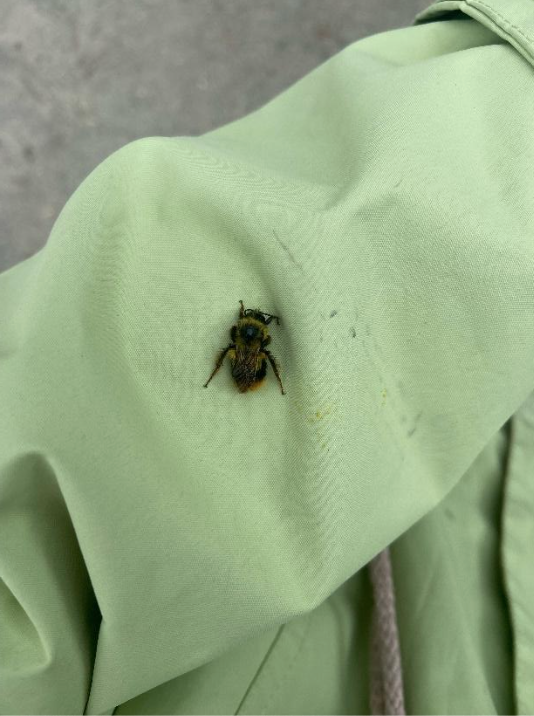
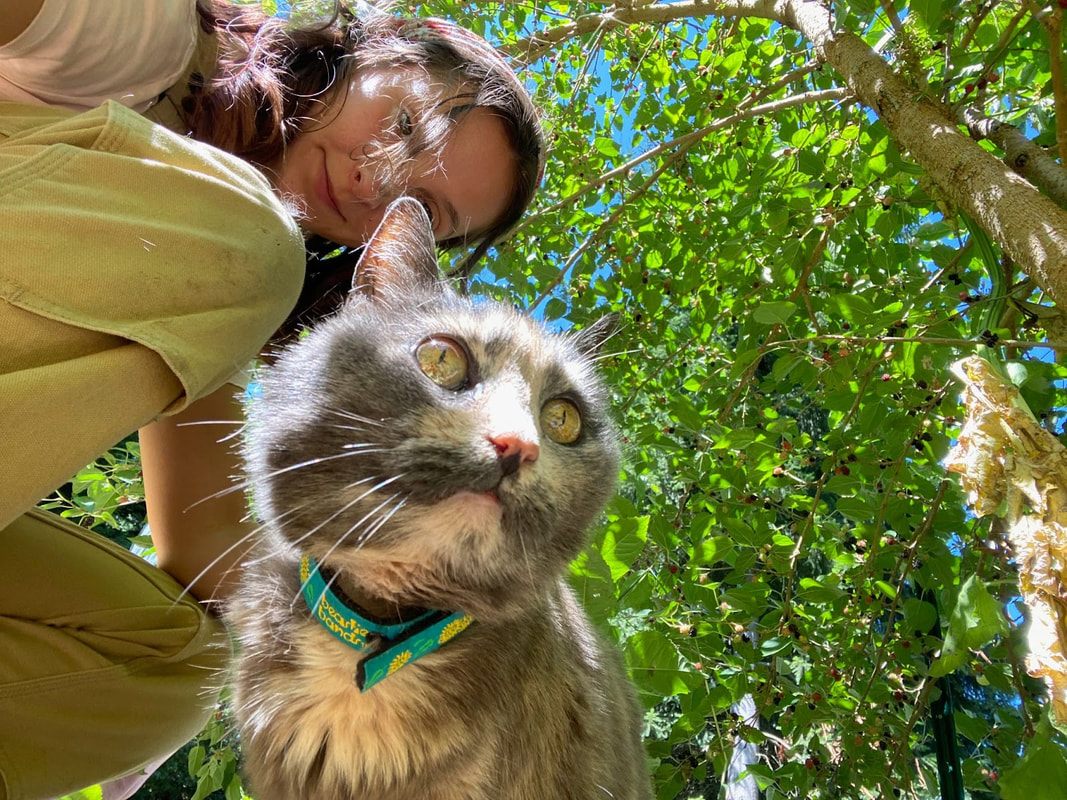
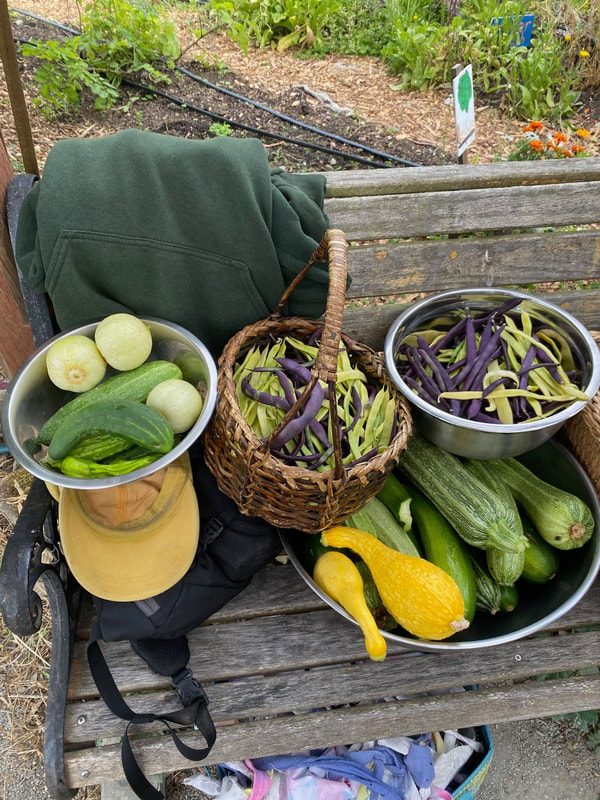
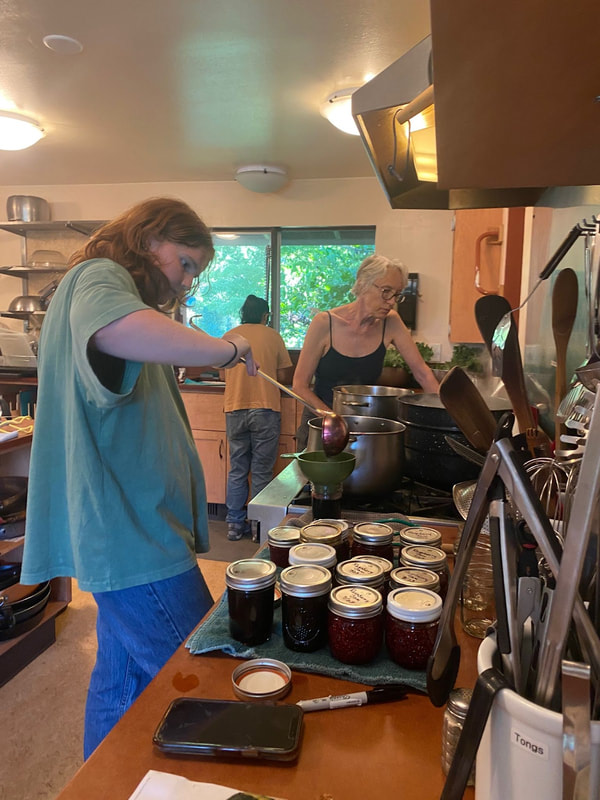
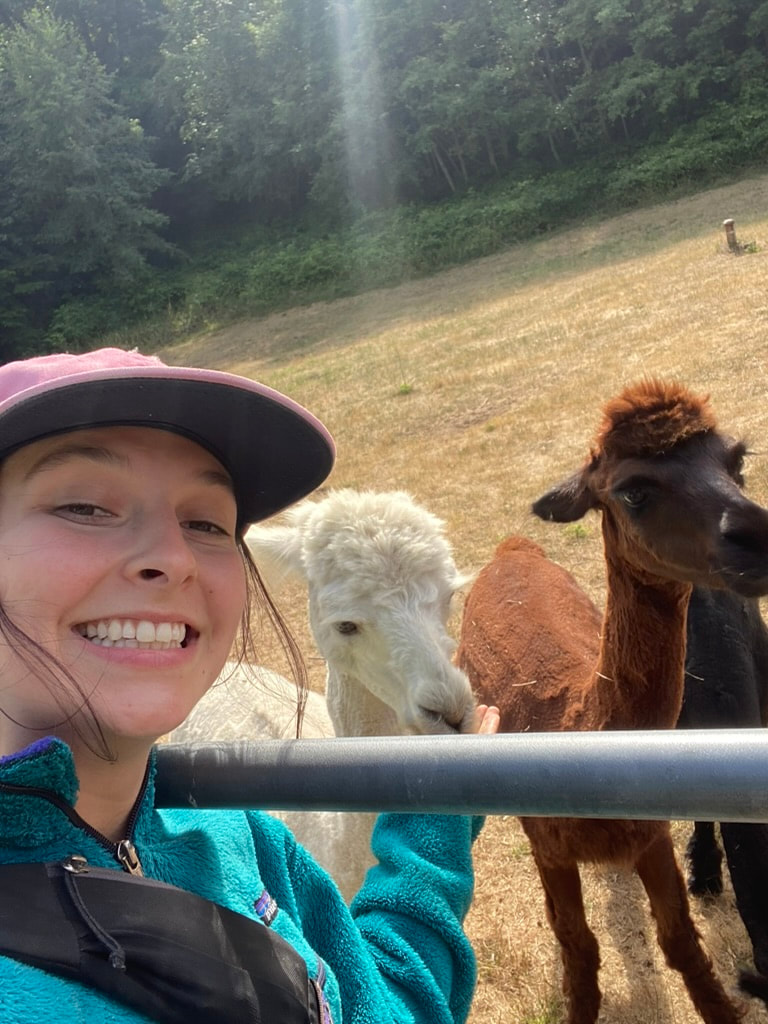
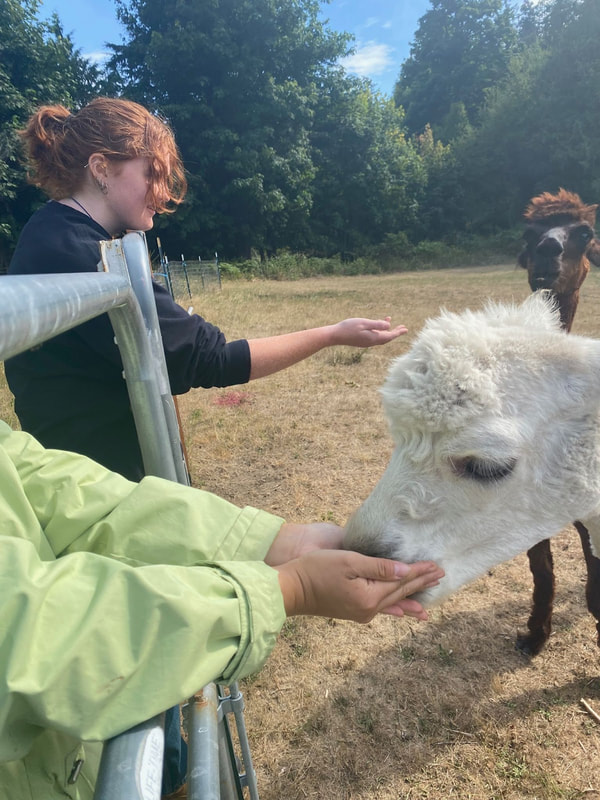
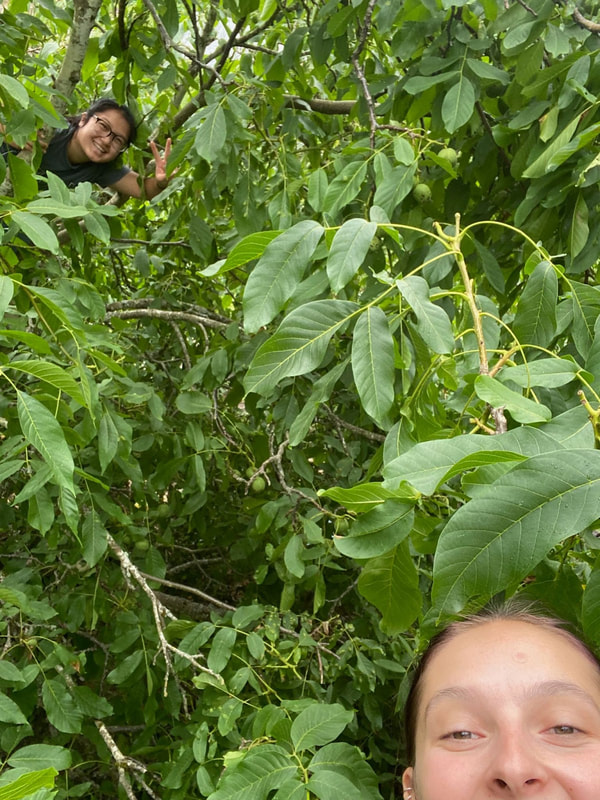
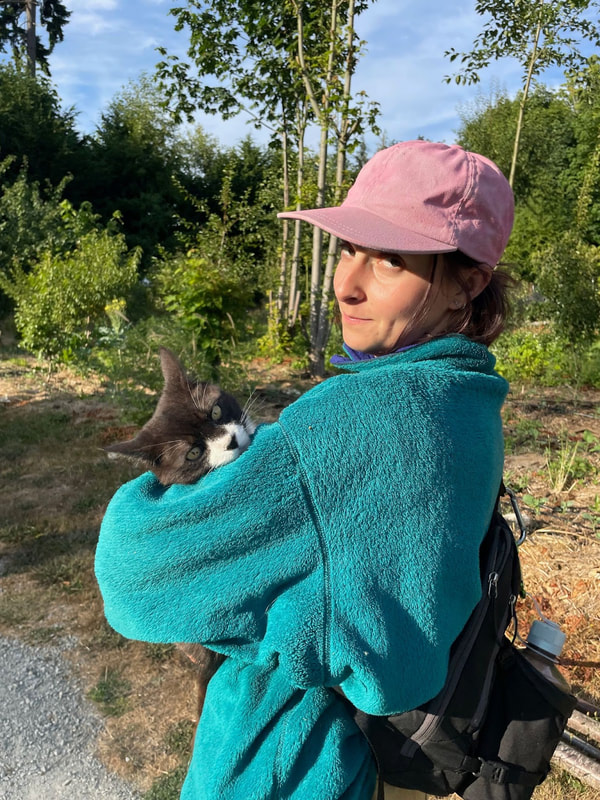

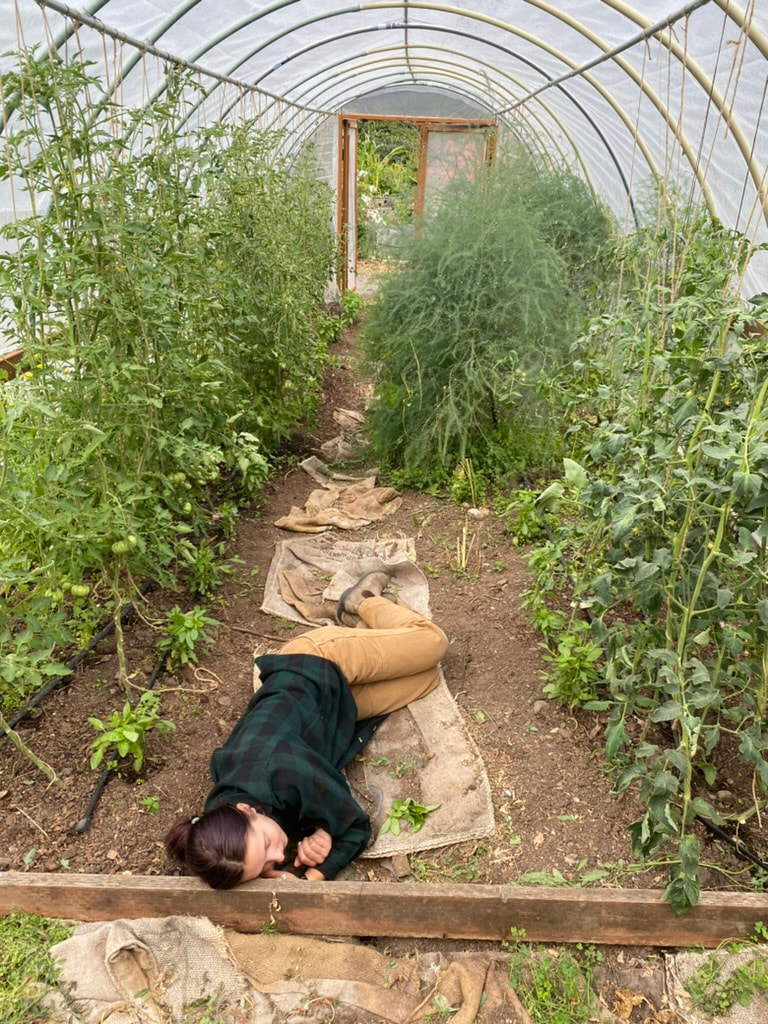
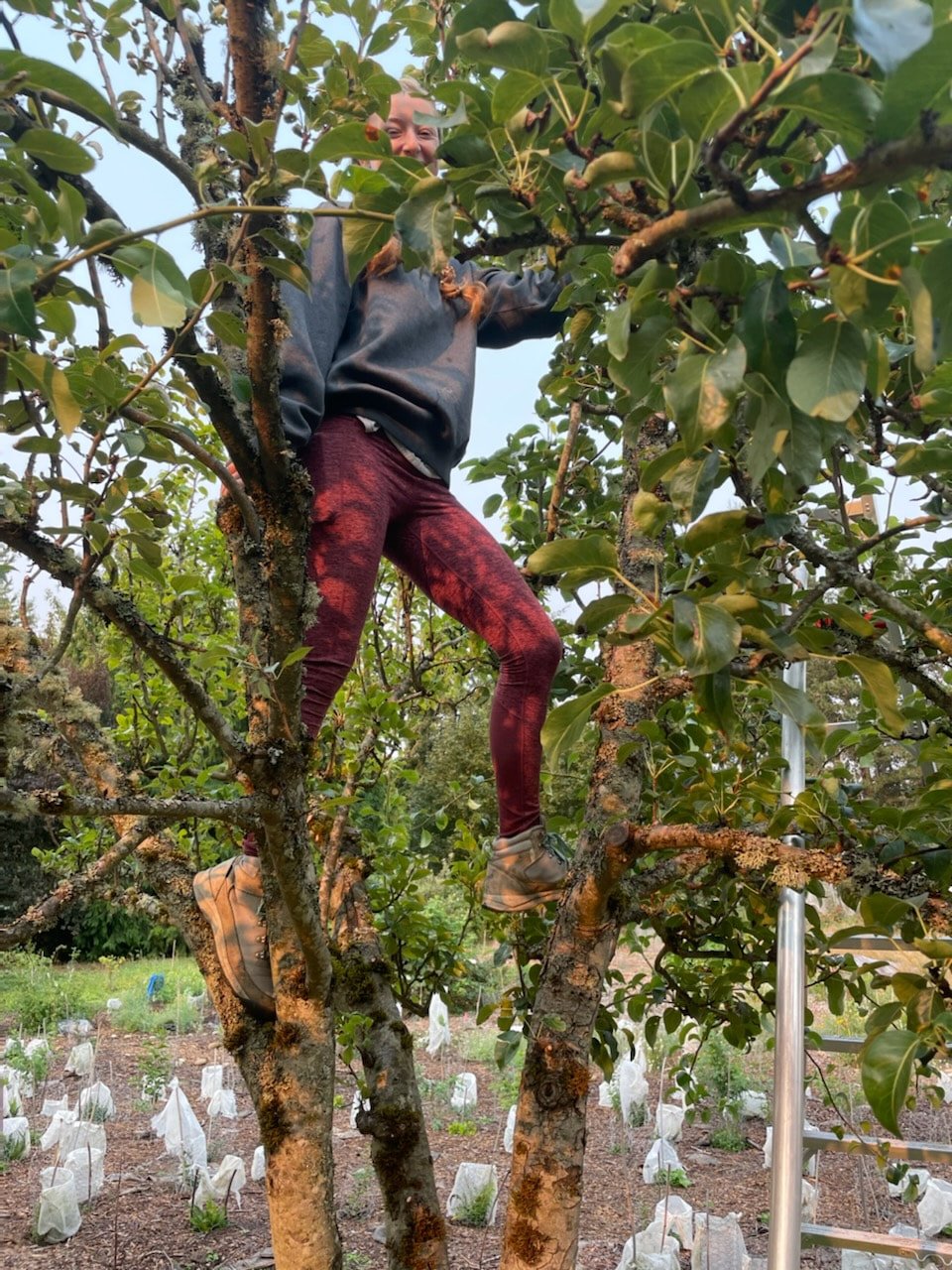
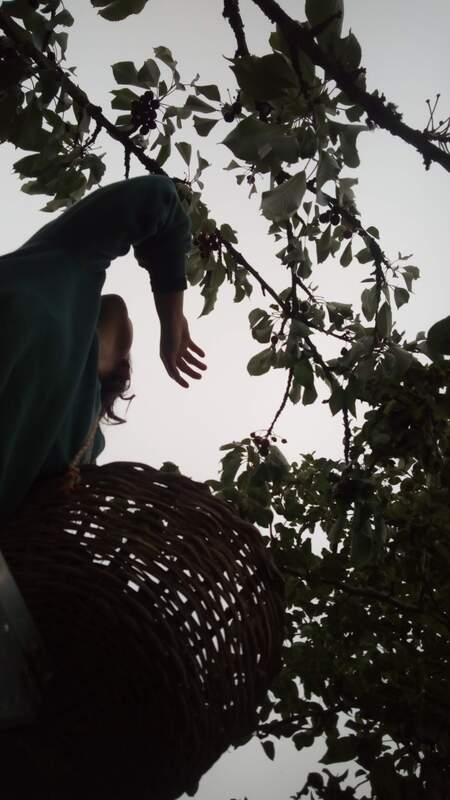
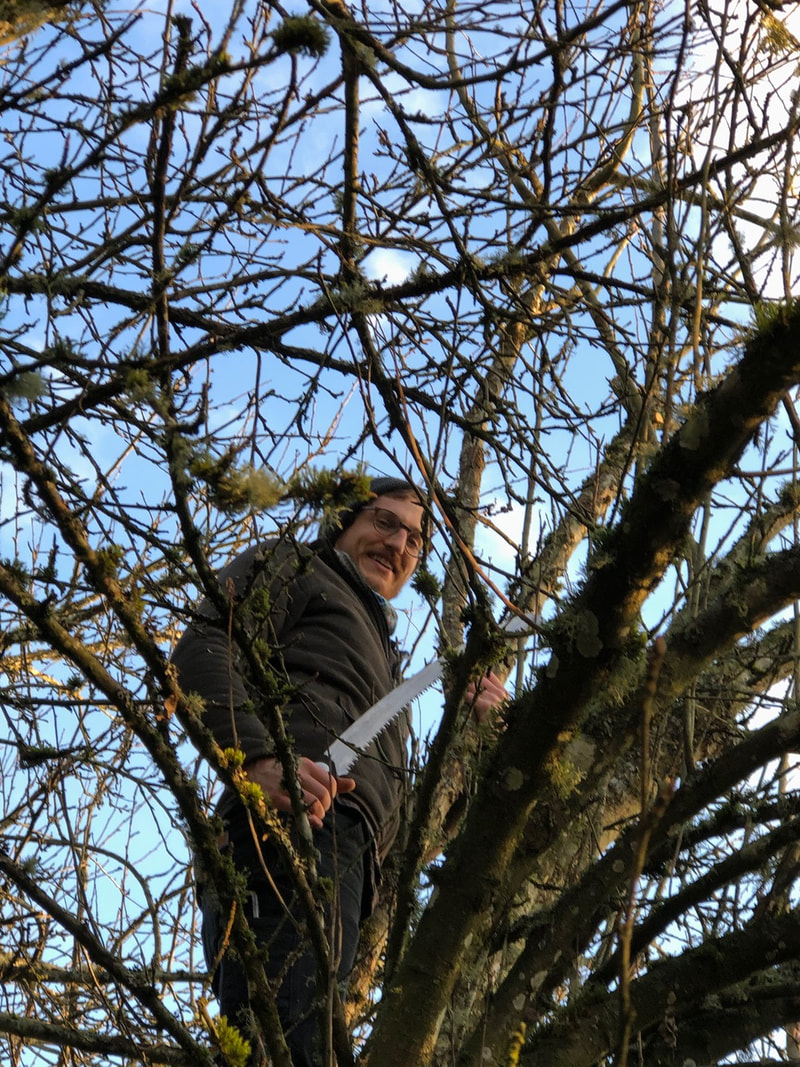
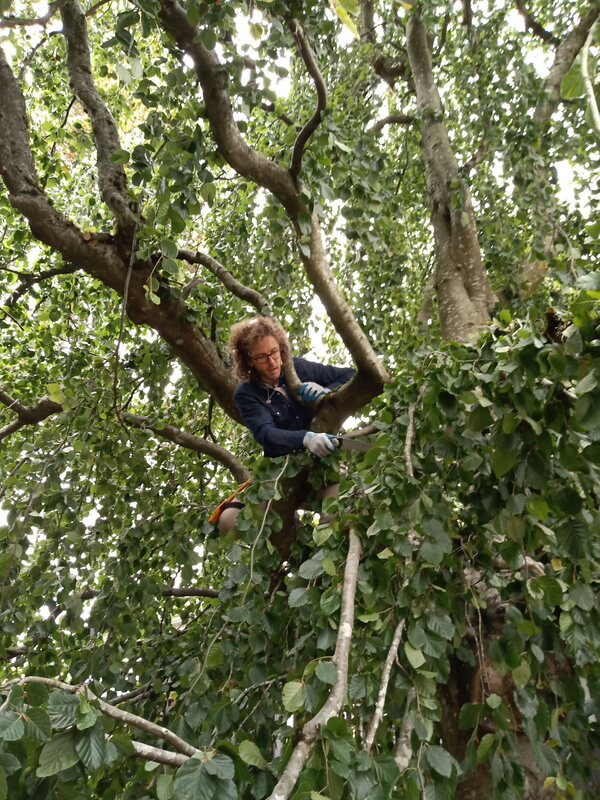
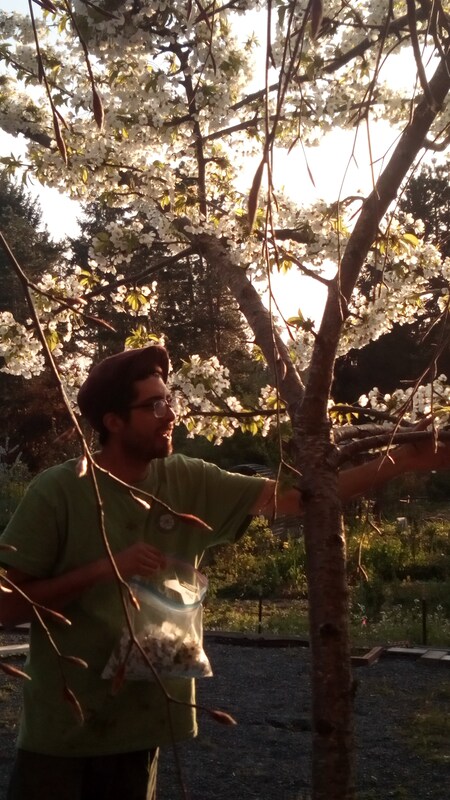
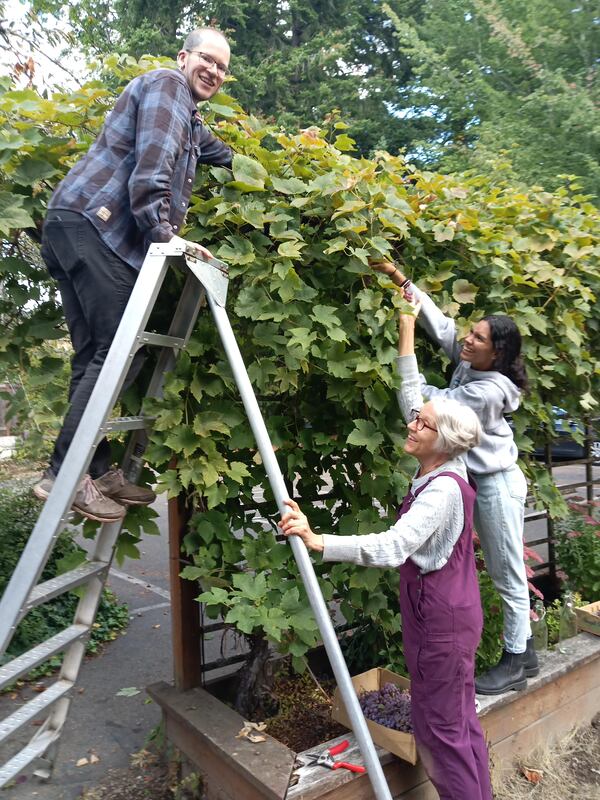

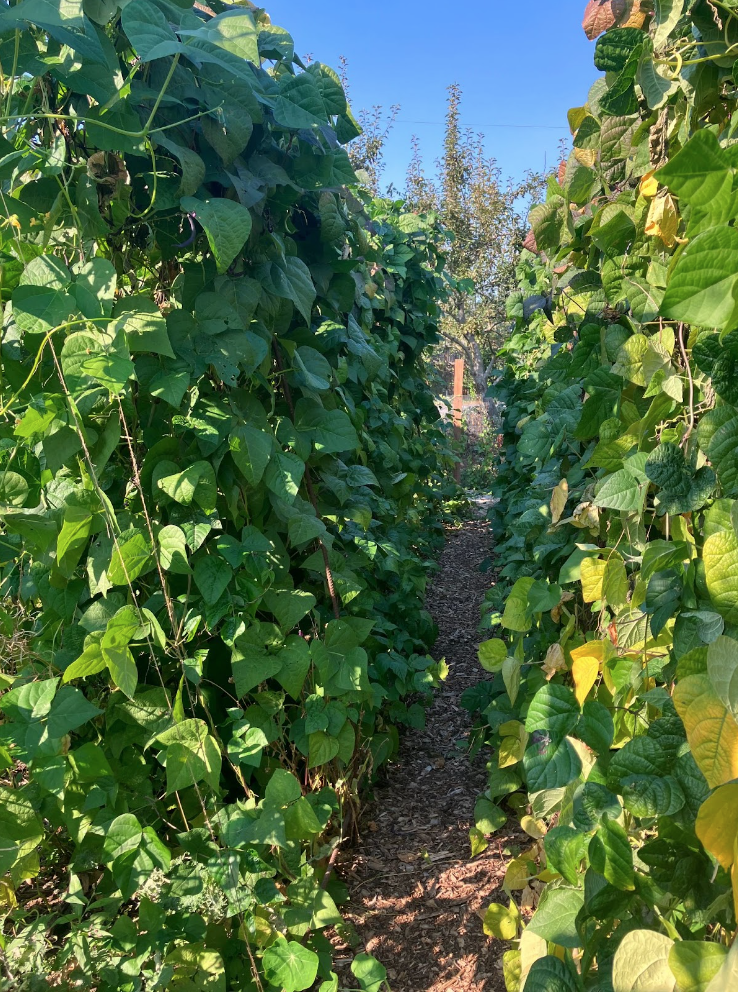
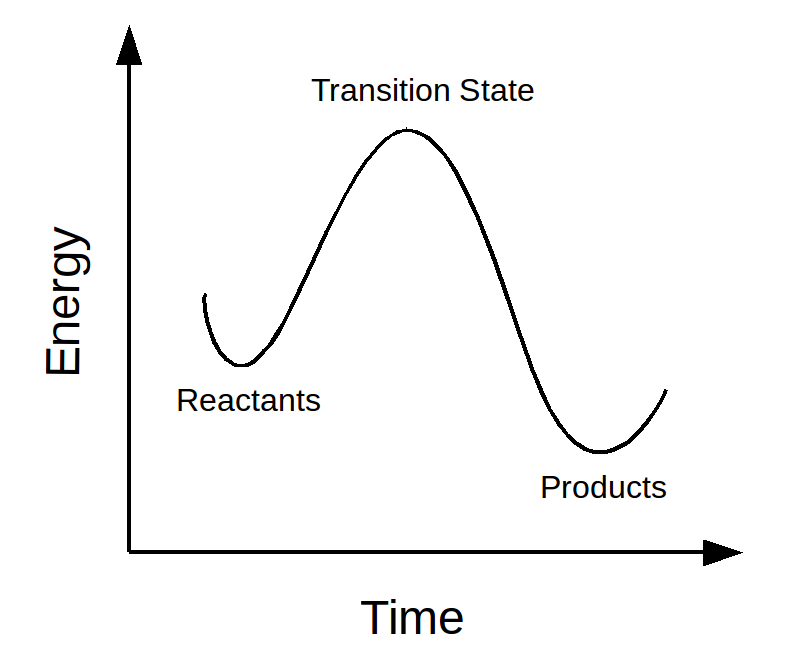
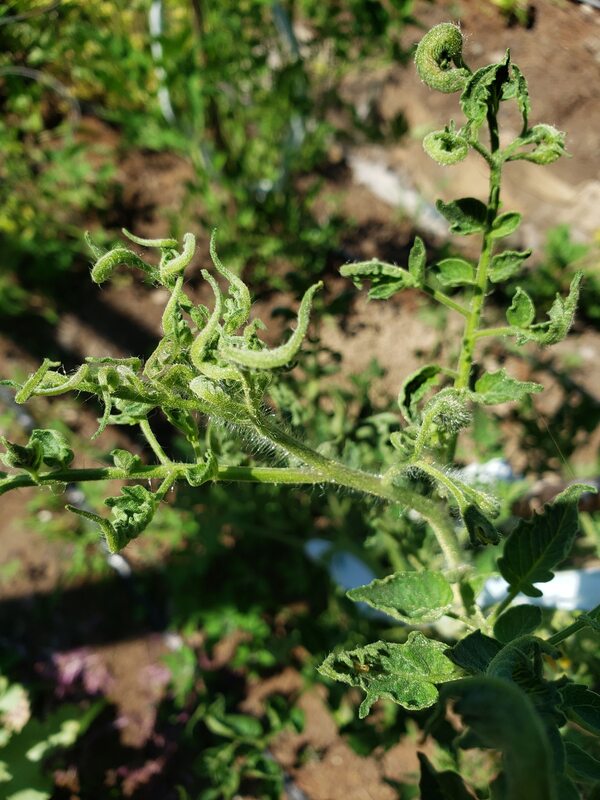
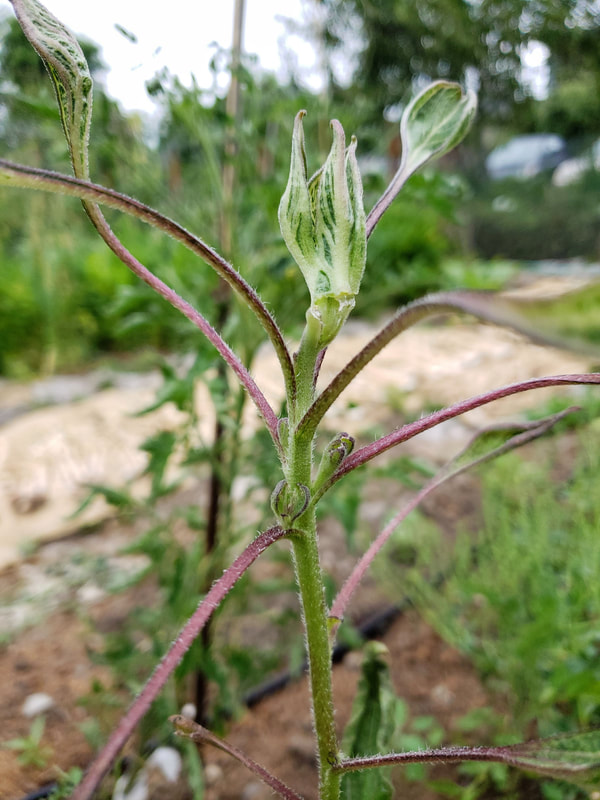
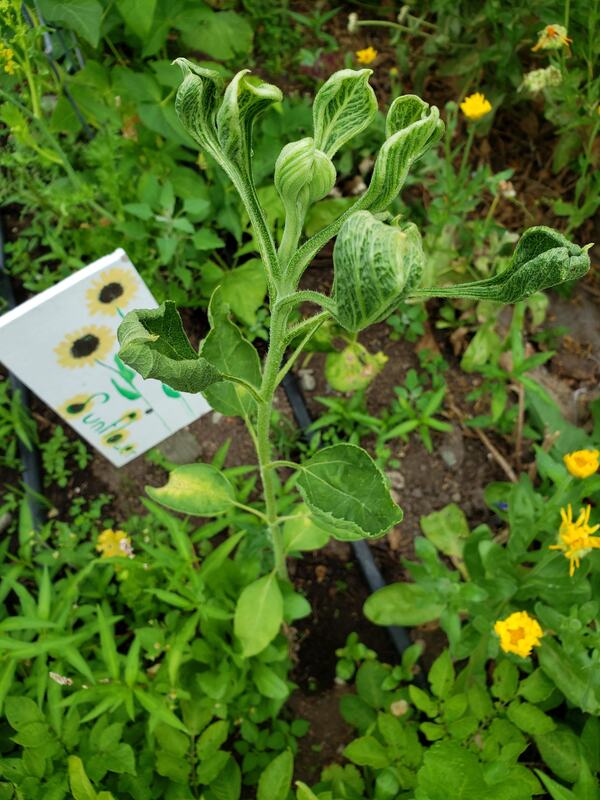
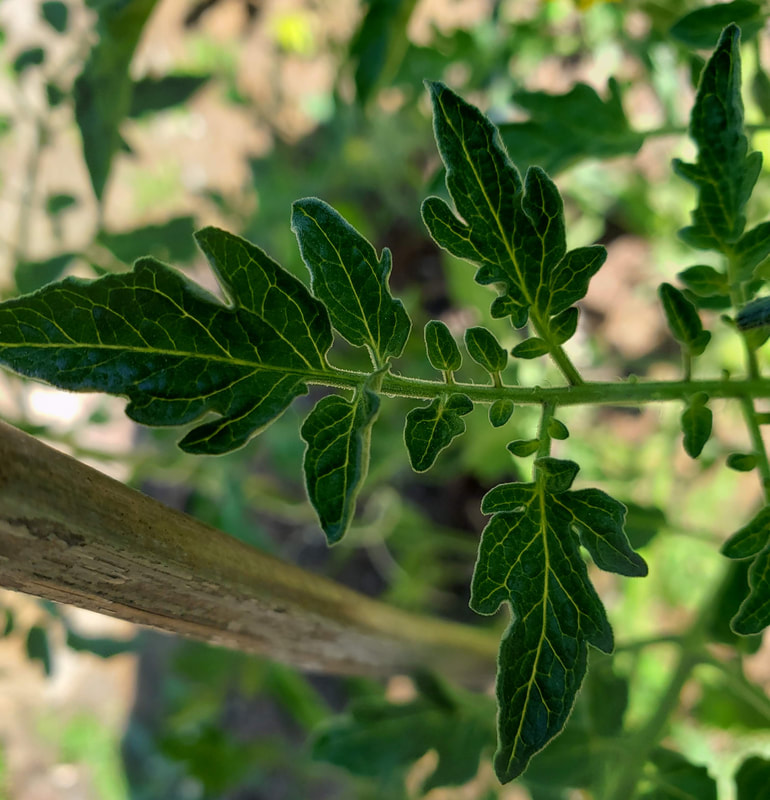
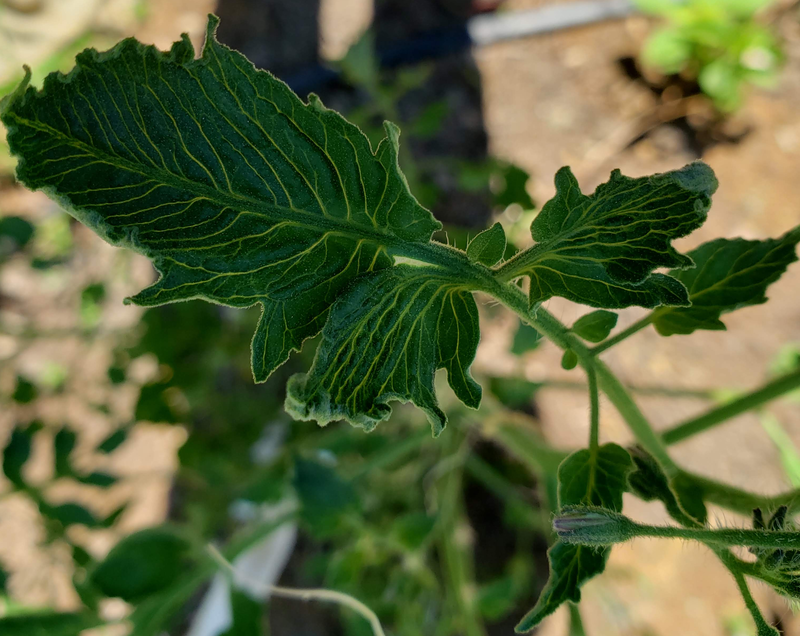
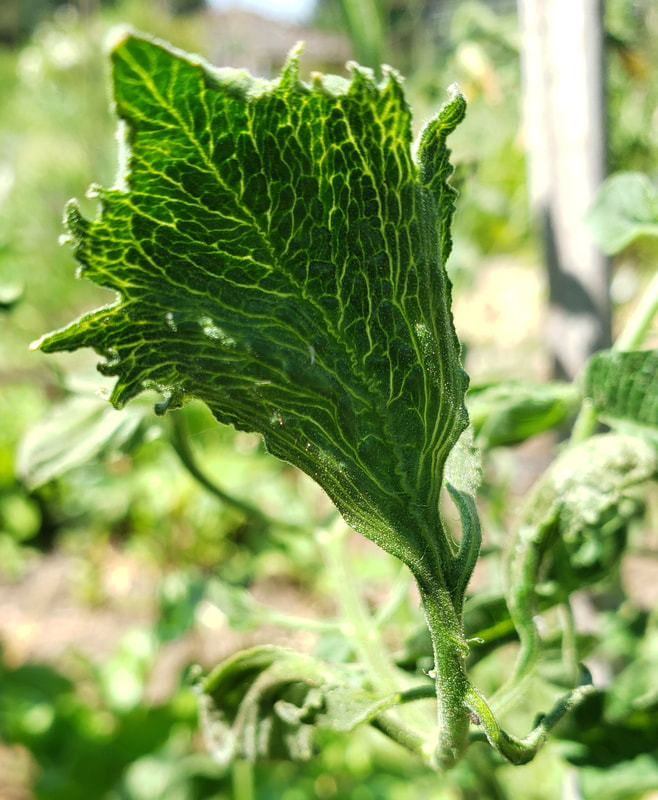
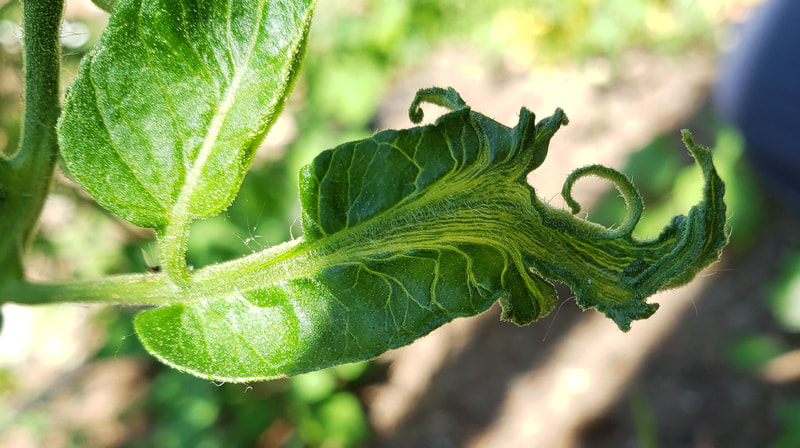
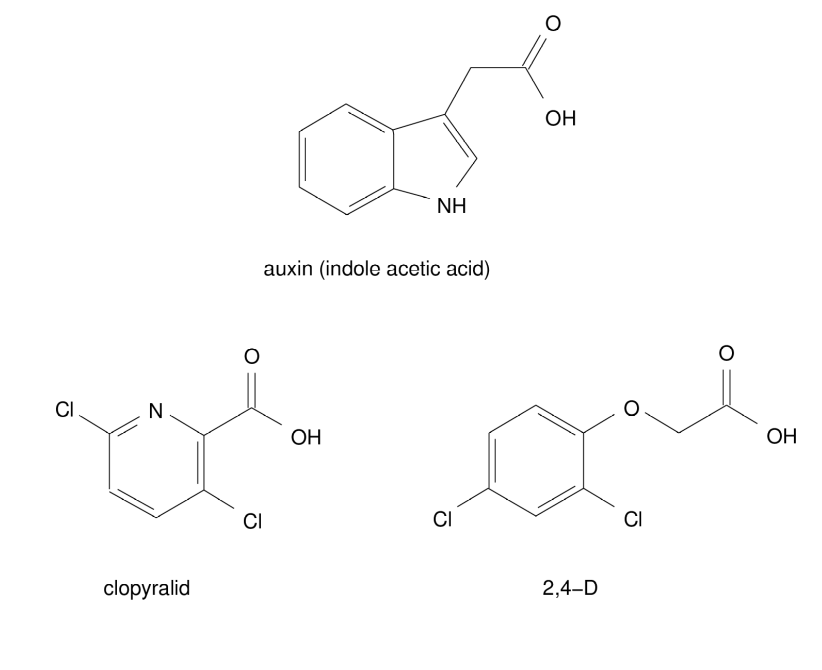
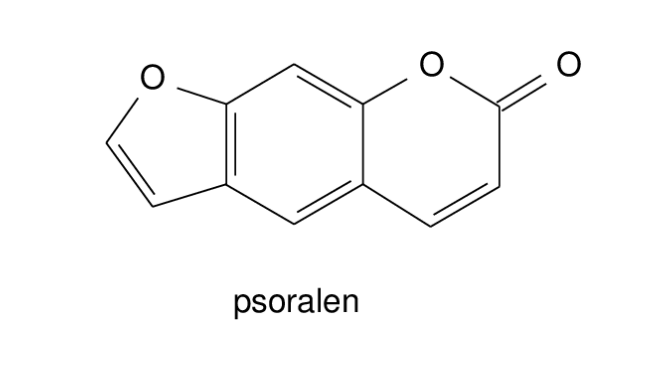
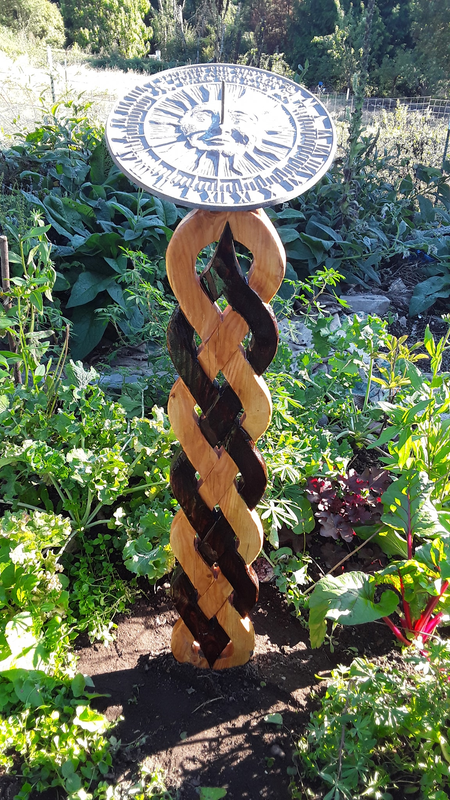
 RSS Feed
RSS Feed